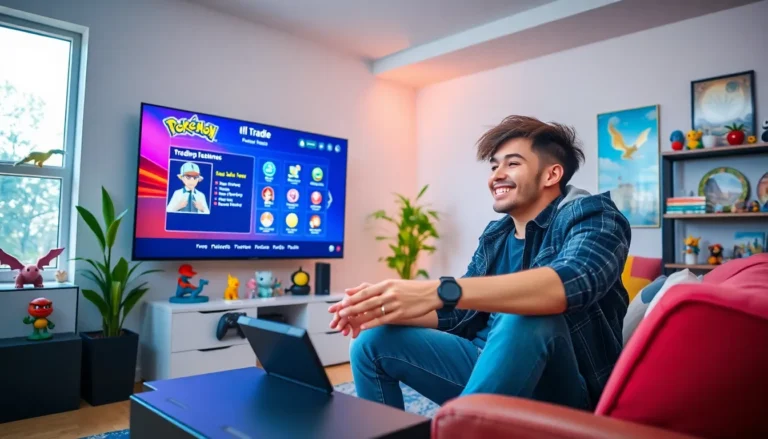Table of Contents
ToggleIn a world where devices are practically glued to our hands, it’s easy to find oneself in a love-hate relationship with technology. The iPad and iPhone duo might seem like the perfect match, but sometimes, they just need a little space. If you’re tired of your iPad mirroring every move your iPhone makes, it’s time to break the sync cycle and reclaim your digital independence.
Understanding Device Synchronization
Device synchronization allows users to keep their iPad and iPhone connected, sharing data like contacts, calendars, and photos seamlessly. Constant syncing can lead to a lack of control over personal information across devices.
What Does Unsyncing Mean?
Unsyncing refers to the process of disconnecting two devices, such as an iPad and an iPhone, from sharing data. Users no longer see mirrored information on both devices after unsyncing. Documents, media, and app updates won’t automatically transfer between them. This action gives individuals personalized experiences, choosing which device to use for specific tasks.
Why Would You Want to Unsync?
Desiring digital independence motivates many users to unsync their devices. Privacy concerns arise when personal data appears across multiple platforms. Additionally, varied usage patterns may lead to confusion, with irrelevant notifications or duplicated entries. Unsyncing allows tailored management of content based on individual needs and preferences, leading to a more streamlined and organized digital life.
Methods to Unsync Your iPad from Your iPhone
Unsyncing an iPad from an iPhone can enhance control over personal data. Several methods exist for achieving this, each tailored to user preferences.
Unsyncing via iCloud
Accessing iCloud offers a straightforward way to unsync devices. Start by opening the Settings app on the iPad. Tap on the Apple ID banner at the top, followed by selecting “iCloud.” Disable specific features like Photos, Contacts, and Calendars, which prevents shared data between devices. Confirm the changes, ensuring that necessary data remains available without synchronization. Regularly checking these settings promotes a more individualized experience.
Unsyncing via iTunes
Utilizing iTunes provides an alternative approach for unsyncing. Connect the iPad to a computer with iTunes installed. Click on the device icon in the iTunes window. Navigate to the “Summary” tab and uncheck categories such as Music, Movies, or TV Shows to stop syncing that content. Apply the changes, optimizing the iPad’s media independently of the iPhone. This method is beneficial for users who prefer local media management.
Unsyncing via Settings
Settings on the iPad enable direct control over synchronization. Open the Settings app and navigate to “Messages.” Toggling off “Text Message Forwarding” prevents messages from syncing between the iPhone and iPad. For further adjustments, explore “FaceTime” and “AirDrop” options, ensuring that these services remain independent. Regularly reviewing this section aligns device functionality with personal preferences, enhancing user experience.
Common Issues When Unsynchronizing
Unsynchronizing devices can lead to various challenges. Users often encounter complications that affect data accessibility and settings management.
Troubleshooting Sync Problems
Data syncing issues frequently arise during the unsync process. Users may experience missing contacts or photos after disabling iCloud features. It’s essential to double-check the settings in the Settings app. Ensure that the toggle switches for shared features are turned off. If problems persist, restarting both devices often resolves temporary glitches. Refreshing the connection through this simple step can restore normal functionality and alleviate confusion.
Tips for a Smooth Unsync Process
Preparing for the unsync process involves several important steps. Begin by backing up data on both devices to prevent loss. Consider reviewing which features to disable ahead of time to create a seamless transition. Adjusting notifications and app preferences ahead of unsyncing also fosters a better experience. Focus on each device’s individual settings instead of relying on defaults. Regular checks of these configurations offer continued independence and personalized interaction.
Breaking the sync between an iPad and iPhone can lead to a more personalized and organized digital experience. By unsyncing, users regain control over their data and can tailor their device settings according to individual preferences.
It’s essential to carefully manage settings in iCloud and iTunes to ensure a smooth transition. Regularly reviewing these settings not only enhances privacy but also reduces unnecessary clutter.
Embracing this independence allows for a more focused use of each device, ultimately making technology work better for personal needs. With a little effort, users can enjoy the benefits of a customized digital life.







